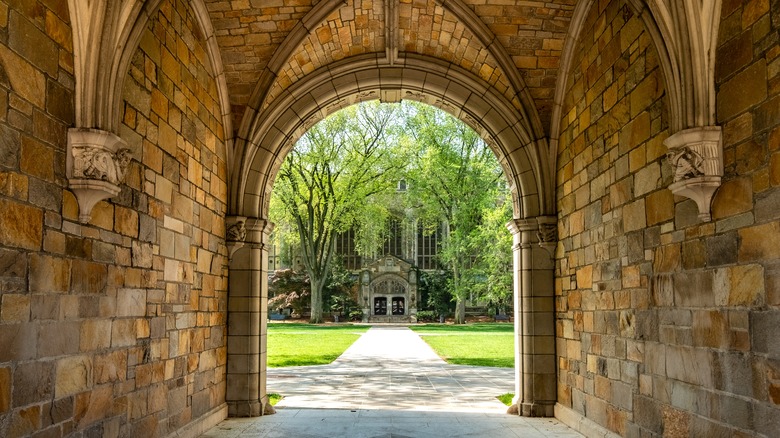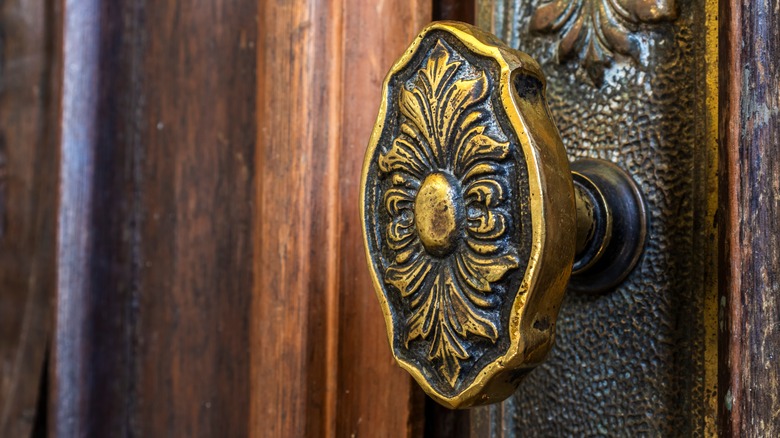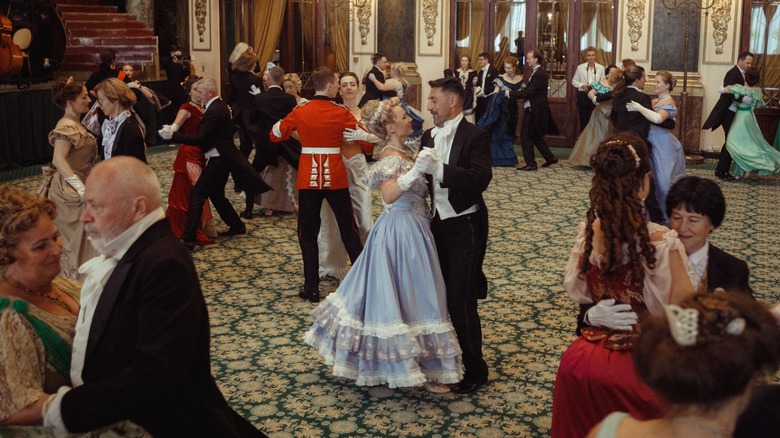One Of Michigan's Premier Destinations For History Is A Grand, Elegant Estate That Hosts Events Year-Round
Michigan really does have everything you'd want in a destination. Magical, picture-perfect small towns are scattered across both peninsulas, while the state's trails lead you through forests to waterfalls that look almost too pristine to be real. There's even a whole island where hand-drawn carriages and waterfront sunsets create scenes so idyllic they border on fantasy. But a little known fact is that Michigan is also home to what's considered to be America's most magnificent surviving Tudor Revival estate which has been throwing spectacular events for nearly a century.
Located in Rochester, Meadow Brook Hall is less than an hour's drive from Detroit. It may not be the first thing that comes to mind when one thinks of Michigan, but it has the kind of presence that rivals the state's natural landmarks. Built with the ambition and excess of the 1920s by one of the auto industry's most influential families (John Dodge's then-widow, Matilda Dodge Wilson), it's now a National Historic Landmark where visitors can walk straight into a house that was designed to impress from the very first step inside.
Inside the grandeur of this Tudor Revival masterpiece
Meadow Brook Hall manages to be both opulent and functional, a paradox only possible in the exuberant 1920s. Matilda Dodge Wilson spent three years from 1926 to 1929 creating what would become her masterwork — an 88,000-square-foot mansion that cost $4 million during construction and would be impossible to price today. The scale is truly staggering. The estate looks every bit an English manor, but nearly everything was crafted from Michigan materials by American hands. Inside, you'll discover Matilda's eclectic vision at work. She pulled from such a wide spectrum of styles that it ends up feeling more like a collection of worlds than a single estate. Some rooms, like Matilda's own private chambers and the study, follow a more classical design, while the game rooms (modeled after English pubs) take a completely different turn.
It was meant to impress in 1929, and it still does. Details leap out at every turn as you encounter a level of ornamentation that borders on obsessive. From the custom doorknobs in each of the 110 rooms to the woodwork and plaster ceilings carved and molded entirely by hand. The art collection she and her second husband Alfred Wilson assembled still hangs throughout the rooms while sculpture punctuates both the interior and the landscaped grounds. A few playful touches — a fountain room here, a conservatory there — keep the place from tipping into solemnity. For all its size and opulence, Meadow Brook Hall was never meant to sit stagnant as a monument; it was designed to be lived in and filled with people. And nearly a century later, that tradition continues with a calendar of events that brings the mansion to life throughout the year.
The many moods of Meadow Brook Hall
Oh, to fall in love with life again. That's what Meadow Brook Hall's calendar of events is really about: evenings that feel lifted straight from The Great Gatsby. This estate never forgot what it was built for — parties, and lots of them. The calendar shifts throughout the year with events that match any kind of evening you might be in the mood for. And what a mood it is.
This year's "Midnight at the Masquerade" mystery dinner, for instance, perfectly fulfills the fantasy of living inside an Agatha Christie novel set in an actual castle. The dress code alone transports you right into a fever dream of Art Deco glamor — you're encouraged to go all out to transform yourself into someone deliciously mysterious for the evening. There's nothing quite like solving a murder over a 3-course meal while decked out in full regalia. October also brings their "Hall-oween: Bewitching Hour" event which transforms the mansion into a grown-up costume party with signature cocktails like Poisoned Apple Punch and scares that wind through the mansion's dark corners and woodland paths.
There's something to be said for what happens when you dress for the occasion. History professor Linda Przybyszewski traces this back in "The Lost Art of Dress" to a time when selecting appropriate attire for special venues served as both a mark of respect and a method of personal transformation — you weren't just going somewhere, you were becoming someone. No one's handing out rules at the doors of Meadow Brook Hall, but it's hard not to rise to the space and play along. Let the grandeur of the house give you permission to step outside your routine.


